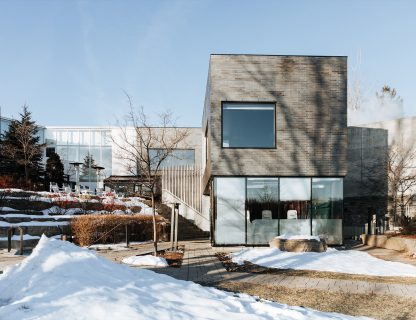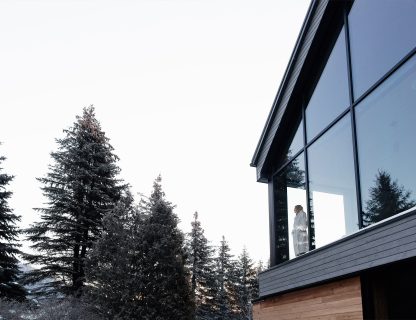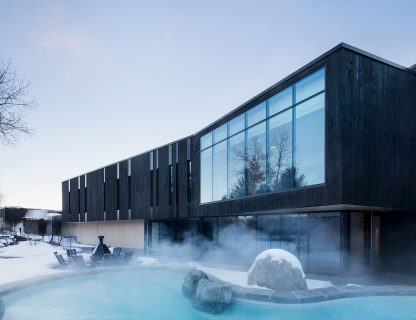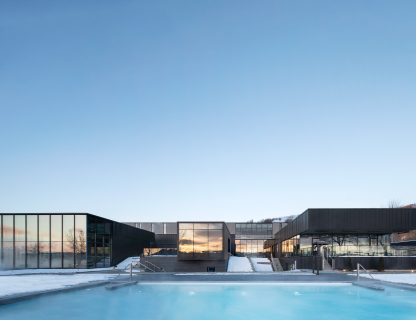One might easily think that turning off our computer and no longer being contacted by our employer after 5 pm is a given. However, in 2016, France was the first country to include in its laws the right to disconnect, authorizing employees not to be reachable outside work- ing hours1. That we have come to legislation regarding this matter may seem extreme, but it reflects the fact that we are increasingly expected to be constantly available or—in other words—constantly willing to be distracted or disturbed.
This expectation, which has gradually become common, is not confined to the workplace. It has even made its way into our personal lives, where we force ourselves to be continually connected. It’s nearly impossible for me to sit down to read without always catching my hand reaching for my phone. When I want my mind to be focused on the task, the only solution is to leave all my digital devices in another room. And even when I do that, I admit that I sometimes end up getting up without realizing it to go and check something as trivial as the astrological sign of the author of the book
I’m reading… And I’m not alone: In 2018, 45% of Canadians claimed that they checked their smartphones at least every 30 minutes2. It would not be surprising to learn that this figure has increased in recent years, particularly due to the virtualization of work.
Technological devices and their platforms are designed to monopolize our attention. Over time, we end up becoming vaguely complicit in this. It is much easier to choose dis- traction than to deal with what is happening around us. The escape is at our fingertips, and the excuses are endless.
Although the motivations behind the desire to experience a wellness retreat may be multiple, it may be this omnipresence of diversion and our difficulty in detaching ourselves from it that explains part of the growing enthusiasm for the concept. Our visceral need to take a step back, away from likes and notifications, has redefined an entire segment of the tourism industry. This need reflects our thirst for settings that allow us to be absent, and perhaps also the need to be forced to return to the present moment. Among the benefits of taking this time for ourselves are the return to calm, the reduction in stress, and the possibility to meditate and reflect on certain aspects of our lives in order to gain new perspectives or find solutions to the problems that worry us2.
Even though retreats are becoming increasingly varied and specialized—for example, you can plan a yoga trip with goats on a farm in Oregon—it is not always necessary to invest extraordinary sums or even leave your region to be able to enjoy a moment of calm and rejuvenation. Whether it’s for a weekend, a day, or just a few hours, alone or with others, here are a few principles to consider when devising your own “close-to- home” disconnection retreat.
1 — The location
For some, nature is the perfect refuge to recharge, reconnect with our surroundings, and relax. For others, by contrast, it is rather favourable to learn to refocus while remain- ing in the hustle and bustle of daily life and familiar places.
While it’s true that it can be beneficial to learn to be well in a multitude of situations by being satisfied with little, the important thing is to ask yourself what your body really needs when you start your retreat. The soothing dimension of silence, which facilitates meditation and contemplation, or the dynamism of an urban environment? The anonymity of the forest or the comfort of your living room?
2 — The schedule
For a successful moment of disconnection, in my opinion, it is important to stick to a planned schedule while remaining flexible. Planning lets you avoid certain risks associated with decision-making and automatic habits, such as constantly reaching for your phone.
There is something soothing about letting go and feeling guided by a certain program. This allows the mind to devote itself to more than just planning what will happen next. This is where you will be able to change habits or focus on what is really essential: your well-being.
This schedule can be made by yourself or by a loved one who knows you well. It can be marked by moments of relaxation, gentle athletic activities such as yoga, reading, cooking, or any other pastime that makes you feel good. The essential thing is that it keeps you away from sources of distraction and what you don’t really care about.
3 — The intention
Finally, the most important element, but maybe the easiest to miss or forget, is the intention. What do you want to get out of your retreat?
This can be as broad and abstract as clarity of mind or as precise as finding a solution to a specific issue you are facing. The intention is the place you will return to whenever you get bored or feel less motivated. It’s the anchor point that guides you in your journey, the reason that pushes you to want to return to reality.
Sources
1 Hari, J. (2022). Stolen Focus: Why You Can’t Pay Attention – and How to Think Deeply Again. Crown.
2 Statistics Canada. Table 22-10-0115-01. “Smartphone use and smartphone habits by gender and age group, inactive.” DOI: https://doi.org/10.25318/2210011501-eng
3 Ouellette, P. & Carette, D. R. (2006). Les pourquoi d’une retraite à l’Abbaye Saint-Benoît-du-Lac. Reflets, 12(1), 144–166. https://doi.org/10.7202/013442ar




